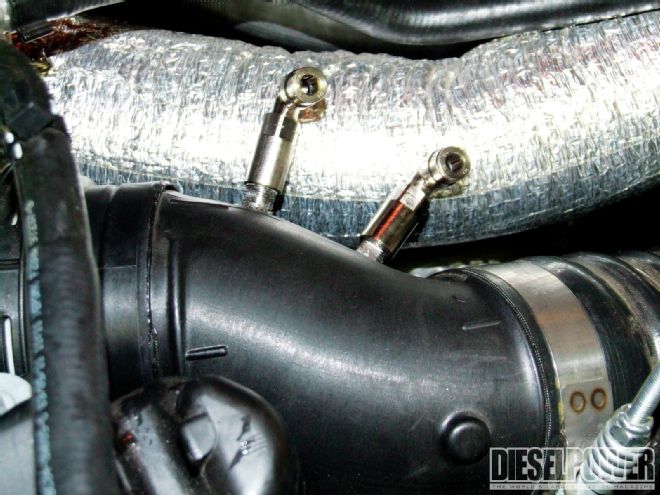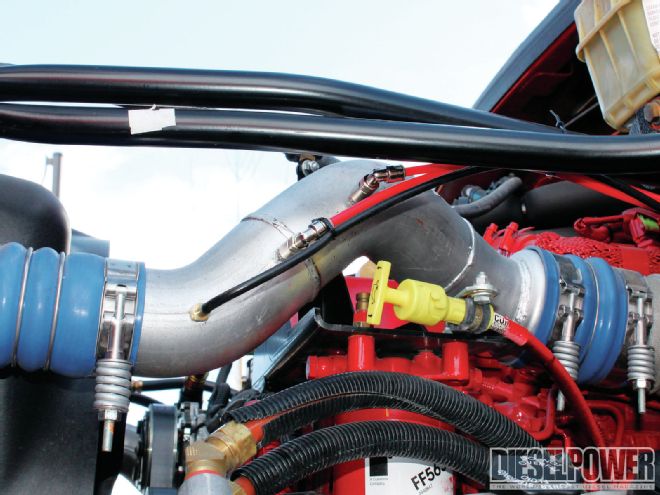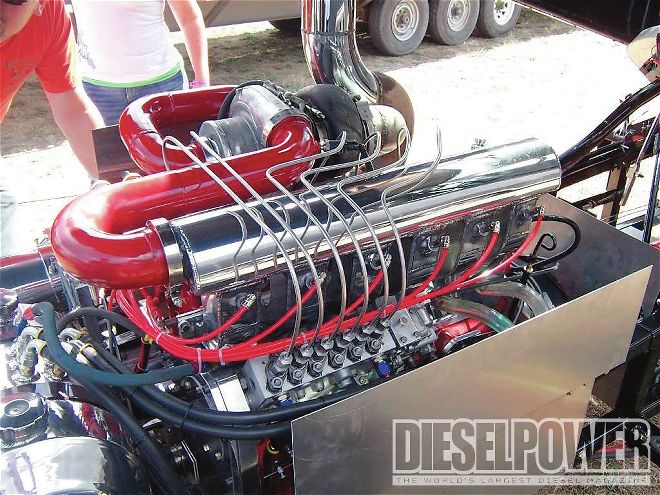What would you say if we told you there was a product that could make more power, lower harmful emissions, and increase fuel economy, all at the same time? You would probably call us crazy, and you would have every right to do so. Fact is, this product does exist, and it’s something you’ve probably known about the entire time.

| A standard water-methanol kit from Snow Performance will include everything you need for a complete install.
Water-methanol injection has been around for a long time. Aside from being included as part of Rudolf Diesel’s original patent, it really began to take off during World War II when the Allies fitted the P51 Mustang with water-methanol injection, substantially increasing their horsepower. After the war, the turboprop aircraft industry used water-methanol injection, calling it the Automatic Power Reserve System, for use in hot or high-altitude take-offs. Water-methanol surfaced again in the ’60s, when General Motors briefly utilized it on factory-turbocharged Corvairs. And after being effectively used in Formula 1 racing, it was banned for adding too much power.
Today, people are using water-methanol injection on high-horsepower, turbocharged race and street cars, and on light- and heavy-duty diesel vehicles. It’s on the diesel-powered vehicles where we see the largest benefit across a broad spectrum of applications. Whether you’re towing, drag racing, sled pulling, chasing horsepower, or looking for better fuel economy, water-methanol injection can help.
How It Works
A modern, over-the-counter water-meth injection system is made up of four main parts. You have the tank, pump, nozzle, and controller. It’s all pretty straightforward; the tank holds the water-methanol mixture while the pump forces the pressurized fluid up to and through the injection nozzle at a rate that is determined by the controller based on the preprogrammed settings, user adjustments, and driving conditions. Different companies offer products with slight variations on components, such as tank size, pump pressure, nozzle size and number, and controller features. Typically, each kit is marketed for a specific purpose, such as towing or fuel economy gain, but there are also generic and do-it-yourself kits available.

| Perhaps the most difficult part of installing a water-methanol system is finding a place to mount the tank. Most people choose to mount them either directly to their truck’s bed, or tucked away inside a toolbox.
Mixing Water and Diesel
From very early on, we are trained to believe water and diesel don’t mix. And while it’s true that finding water in your fuel system is bad, injecting it into your intake manifold is a very good thing. The key to successful water injection lies in the atomization of the liquid.

| This standard 12-volt pump will output 1 gpm and produce more than 200 psi of pressure. This level of output aids in full atomization of the water-methanol mixture in the air stream.
When the liquid is injected into the air stream, it is forced (at high pressure) though a tiny nozzle. This action reduces the spray to a very fine mist, also called atomization. As the mist turns from a liquid state to a gas state, it is absorbing heat and lowering the temperature of the compressed air. The surface area of the droplets created during the atomization process determines exactly how much heat the liquid can absorb. With volumes remaining constant, the more finely atomized the droplets, the more total surface area there is, meaning more heat can be absorbed, cooling the intake air more so than larger droplets. Ultimately, the cooler we can make the intake air, the denser it gets; and the denser the air is, the more oxygen it has available for combustion. More oxygen means we can add more fuel, thereby making more power. Intercoolers work on this same principle, which is why it’s fitting that water injection is sometimes referred to as “liquid intercooling.”
Other benefits besides power include dramatically lower exhaust gas temperature (EGT). Many people will run 100 percent water through their system while towing or racing for an added level of security against extreme EGT, as do over-the-road truckers for use when pulling up steep grades. Another benefit is increased fuel economy. Most people who use water injection report seeing a 5 to 10 percent increase in efficiency at the pump. And in this age, when diesel smog testing is expanding, water injection has been proven to lower NOx and particulate emissions substantially, also prolonging the life of diesel particulate filters.
Why Add Methanol
Methanol, also known as wood alcohol, methyl alcohol, or methyl hydrate, is the fuel commonly used in alcohol-burning race cars. It is also found as an antifreeze agent in -20-degree winter blend windshield washer fluid and other freeze-prevention products. And in the very simplest of terms, because methanol is a fuel, it will add even more power when injected into and burned in a diesel engine.
Methanol is the fuel of choice because of its high auto-ignition temperature. What this means is the methanol being added to the combustion chamber will not ignite until after the primary fuel (diesel) does. If the fuel source added were to have a lower auto-ignition temperature than diesel, it could cause pre-ignition, which can damage engines. To put it into perspective, diesel ignites at around 210 degrees Celsius, while methanol doesn’t ignite until 470 degrees Celsius. This makes methanol the perfect fuel to be added along with water injection.
The other reason for adding methanol to the mix is simple freeze protection. Without the antifreeze properties of methanol, the water in the system can become solid in cold temperatures and cause damage to the tank, lines, and nozzles. Even a small amount of methanol will protect the system from freezing.
How Much
Two of the most commonly asked questions when it comes to water-methanol injection are how much methanol to add and how much water-methanol is used in a given number of miles.

| Systems can be filled with straight water, winter-blend windshield washer fluid, or specially mixed fluids, such as Boost Juice. The specialty fluids cost more than the other options, but they also provide the most power, reliability, and consistency.
For methanol concentration, 50 percent methanol and 50 percent water is the maximum recommendation. At this level, the flash point of the methanol is so high that the threat of accidental combustion is extremely low, making it safe for everyday use. Snow Performance sells a product called Boost Juice, a 51/49-percent blend of water-methanol, which is clean and standardized, meaning you’ll get the same results gallon to gallon. If you want a less expensive source of water-methanol, winter-blend windshield washer fluid is about 30 percent methanol. The downside is that it contains some impurities, which may require more frequent cleaning of the nozzle screens. And if you’re not as concerned with making more power but want EGT cooling and increased mileage, straight water is perfectly acceptable. However, 100 percent water should only be used when there is no risk of freezing.
How much water-methanol is consumed depends on a few different factors, including the system you’re using, the number of nozzles, and the load you’re hauling. On average, 1 gallon will last 150 miles empty, or 75 miles when towing a 15,000-pound load. Average tank size is 7 gallons, giving about 500 to 1,000 miles between refills.


